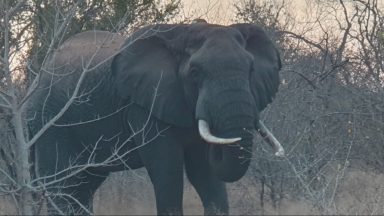Mozambique has more than 600 recorded bird species, yet is a largely unexplored region for bird-watchers due to its turbulent history. Now that is changing. This pristine wilderness area is at the centre of efforts by the Peace Parks Foundation to protect the wildlife and ecosystems of the surrounding Maputaland area, and to form links between marine, coastal and inland areas.
Listed as one of the earth’s 36 biologically richest and most endangered eco-regions, Maputo Special Reserve is rich in flora because of the fertile soil, with a mix of environments ranging from savannah, closed forest and coastal vegetation including giant dunes. Once famous for its vast herds of elephants that migrated from the Tembe Reserve in South Africa along the Futi Corridor, it also has hippo and crocodile as residents, with flocks of migratory flamingos and pelicans and many other bird species.
As one of the largest flying birds in the world, pelicans can cover long distances, often travelling in flocks in a V-formation to reduce drag for the group. Populations of the Great White pelican migrate here to breed, attracted by the shallow swamps of the Maputo Special Reserve. Nesting in large colonies, this landscape is perfect for them. There is plenty of room to make their nests in scrapes in the ground, and an abundant food supply.
A healthy ecosystem means that these shallow pans will be teeming with fish. The chicks you see here, with grey dark flight feathers, feed mainly on fish such as carp and cichlids but also small invertebrates.
The survival of migratory birds depends on the availability of well-connected networks of habitats along their routes, which they use for feeding and resting. For more than two decades, Peace Parks Foundation has worked to restore ecological linkages across southern Africa for land, marine and bird life through the creation of transboundary conservation areas.
In a time when humans are experiencing extreme social distancing and many are bound to their homes, birds remind us that we are still all connected. As they freely fly across our skies, we celebrate their role in keeping our ecosystems alive and let our imaginations follow them as they explore our planet.

